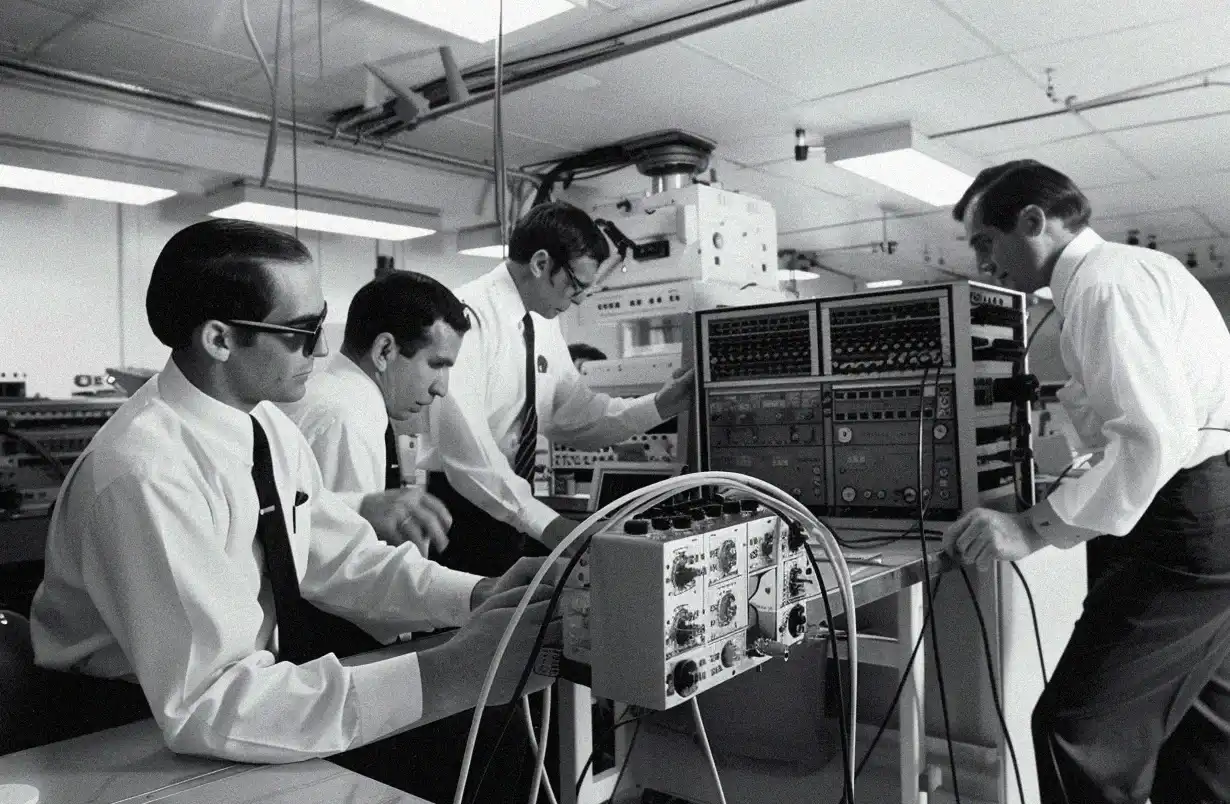The career path for software engineers might look straightforward on paper — junior, mid, senior, staff, lead, manager — but the real mechanics of moving through those stages are anything but linear.
Yes, titles matter. So do years of experience. But what actually moves you forward? Often, it’s less about technical brilliance and more about how you collaborate, mentor, influence decisions, and solve the right problems at the right time.
Some engineers double down on deep technical expertise and become Staff or Principal Engineers. Others step into leadership and grow through people management. Some switch tracks entirely — toward DevOps, security, ML, or product — and build high-impact careers on a different path.
No two journeys look exactly the same. But the patterns are there.
This guide breaks those patterns down — level by level — with clear expectations, real-world examples, and a look at what separates good engineers from the ones who keep climbing. This aligns closely with the software engineer career path most engineers follow.
Software Engineer Career Progression Overview
The software engineering career path is one of the most structured — and one of the most flexible — ladders in tech.
At its core, the progression moves from execution to ownership to leadership. You start by implementing features. Over time, you’re driving architecture, guiding teams, and aligning technology with business strategy. Whether you stay on the technical track or move into management, the expectations at each level grow significantly in terms of scope, autonomy, and impact.
Here’s the typical ladder on the Individual Contributor (IC) path:
- Junior Software Engineer
- Mid-Level Software Engineer
- Senior Software Engineer
- Staff Engineer
- Principal Engineer
- Distinguished Engineer (at top-tier orgs)
And the Management Track runs in parallel:
- Tech Lead / Team Lead
- Engineering Manager
- Director of Engineering
- VP of Engineering
- CTO
Each of these levels represents not just more years of experience, but a shift in how you contribute to your team and company — from doing the work to defining the work.
IC Track vs Management Track: What’s the Difference?
This is where many mid- and senior-level engineers face their first real fork in the road. The IC track is for engineers who want to stay close to the code, lead through technical excellence, and solve deep systems problems. The management track is for those who want to lead people, manage team dynamics, and align delivery with business outcomes.
Here’s how they compare:
Both tracks offer growth, compensation, and influence — but they optimize for different strengths. And some companies allow movement between them, especially at the Senior and Staff levels.
Career Stages & Responsibilities
Software Engineer to Engineering Manager Track
Not every senior engineer wants to manage people. That’s fine. But if you’re curious about leadership — or someone’s nudged you toward it — it helps to understand what changes when you step into the manager track. Spoiler: it’s not just fewer commits and more meetings. It’s a whole different kind of impact.
Team Leadership vs. Technical Execution
If you like solving technical puzzles, being an IC is a great gig. If you’re drawn to spotting patterns in people, identifying team bottlenecks, and helping others grow, you might have the instincts of a manager.
Here’s the core shift: as an engineer, you build systems. As a manager, you build the system that builds the system — team rituals, decision loops, hiring quality, and the way technical discussions happen.
Execution still matters. But now it’s about keeping five people moving instead of writing the cleanest solution yourself.
Transitioning to Management: What Actually Changes
The biggest surprise? How much invisible work you’re doing.
You might go a full week without writing code. Instead, you’re defusing tension between two engineers, rewriting a vague spec before it derails a sprint, and figuring out why someone who used to crush it is suddenly checked out.
You’ll miss the clarity of technical progress. There’s no green checkmark on “retained a great engineer for another year” — but that’s the kind of thing that keeps the product moving.
If you still want to write code every day, this probably isn’t it. If you want to shape how the team works and have a hand in why it builds what it builds — now we’re talking.
Career Growth Tactics for Mid/Senior Engineers
Once you hit mid or senior level, technical skill alone won’t move you forward. Everyone around you can code well. What starts to matter more is how you work — how you communicate, how others experience working with you, and how clearly your contributions connect to team and company goals.
Here’s how to make that growth intentional — and visible.
Make Your Work Legible
Doing great work isn’t enough if no one knows how it moved the needle. Visibility is about making your thinking and decisions easy to understand.
Start small:
- After launching a feature, share what you built, why it mattered, and one thing you’d do differently next time.
- When leading a design change, explain the trade-offs clearly in a team or project channel.
- Ask your PM or lead how your work will be used in the next review or demo — and tailor your updates accordingly.
Want to build this habit? Try this:
Own the Problems That Slow Others Down
One of the fastest ways to get noticed: take ownership of something that’s slowing the team down, even if it’s outside your ticket queue.
This could be:
- Stabilizing flaky tests no one wants to touch
- Automating a manual step in the deploy process
- Cleaning up a legacy service that keeps causing regressions
- Rewriting an outdated doc that blocks onboarding
These are high-leverage projects. They show leadership and long-term thinking. And when you reduce friction for others, people notice.
Mentor Proactively (Even Without a Formal Program)
Helping junior engineers grow is one of the clearest signs you’re ready for the next level. You don’t need permission — just pay attention to who’s stuck, offer to pair, or leave thoughtful, educational review comments.
Make Cross-Team Contributions
Work that touches multiple teams tends to have higher visibility and longer-term impact. That could mean contributing to internal libraries, documenting shared patterns, or helping standardize tooling.
Level-Up Your Communication Skills
Clear writing and speaking are force multipliers. If you want to move into Staff+ or Tech Lead roles, this is non-negotiable. Practice by writing short proposals, clarifying Slack threads, or leading retros.
Document What You’ve Already Done
Engineers often forget to advocate for themselves during reviews. Start keeping track of what you’ve shipped, what problems you’ve solved, and where you made others more effective.
Come review season, this becomes gold.
Ask for Feedback
Instead of vague “how am I doing?”, ask:
- What would I need to do to be considered Staff here?
- Is there something I should be owning that I’m not?
- What am I doing today that looks like a next-level engineer — and what’s missing?
It shows intention — and gets you better data.
Final Thoughts
There’s no single path to a successful engineering career — and that’s a good thing.
Some engineers grow by building deep technical expertise. Others thrive by leading teams, shaping process, or spotting problems before anyone else does. Some switch companies, tracks, or tech stacks to find the right environment for their next stage.
What matters is that your growth feels intentional — not reactive.
Wherever you are, keep going with purpose. The next level isn’t a mystery. It’s built on habits you can start now.







.png)

.webp)








